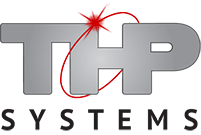Product Overview
Multiple-Input Multiple-Output SRS VCS
The Shock Response Spectrum vibration control package provides controls to meet a target Required Response Spectrum (RRS). Waveforms are automatically synthesized from a user-specified SRS reference profile using sine wavelets. The Transient Control option allows control of imported transient files. Users can apply high frequency waveforms and alarm
and abort tolerances to any active channel to provide an extra degree of safety for delicate test articles.
Key Features
- Waveform Synthesis Methods: control time waveform is generated from damped sine or sine beat components
- Damped Sine Parameters: frequency, amplitude, critical damping factor, delay
- Sine Beat Parameters: frequency, amplitude, number of half sine delays
- Component Generation: auto or manually controlled
- Synthesis Parameters: waveform duration, max % of error, max number of iterations
- Continuous Data Recording
During vibration control, all measurement input and drive signals can continuously record to a Spider-NAS or the internal storage residing in each front-end. Users can view and analyze data files with Crystal Instruments Post Analyzer. The variable sampling rate can be enabled to simultaneously record slow-change signals together with high speed vibration data.
Safety Features
- Abort Sensitivity: a single parameter allows the ensitivity and tolerance of various safety checks to be asily adjusted between customizable lower and upper bounds
- Shaker Safety Limits: limits for shaker acceleration, velocity, and displacement
- Open Loop Detection: open loop detection for control signal and each input channel. Detection is based on maximum control loss or maximum RMS rate of change in the input channels.
- Control Limits: enforces abort time limits for control signals. Allowable ratio of points exceeding abort limits to total number points in a frame: 0 – 100%
- Max Drive Limit: maximum voltage limit for drive output
- Time Domain Limit: Raw, or RMS to any input channel


 MIMO Brochure
MIMO Brochure